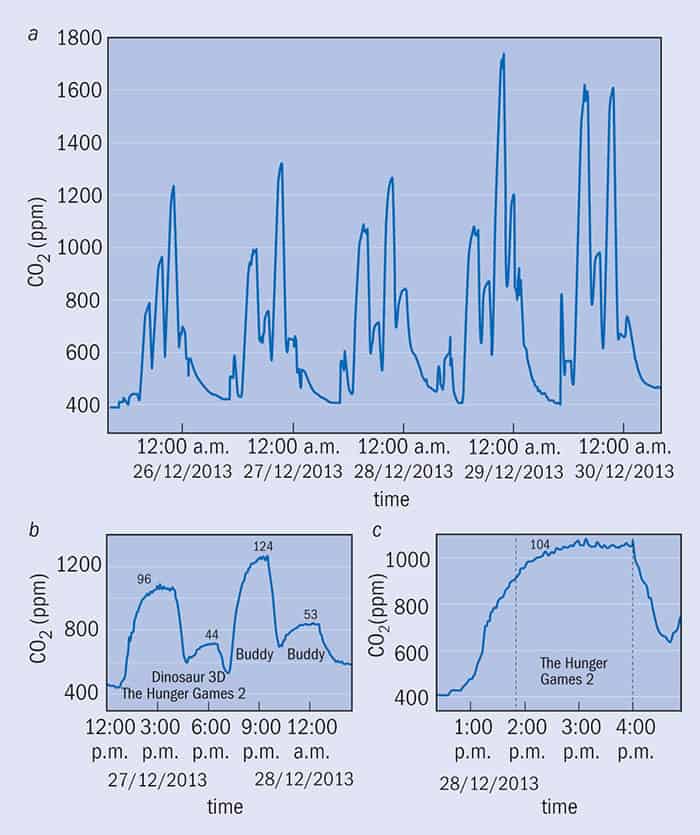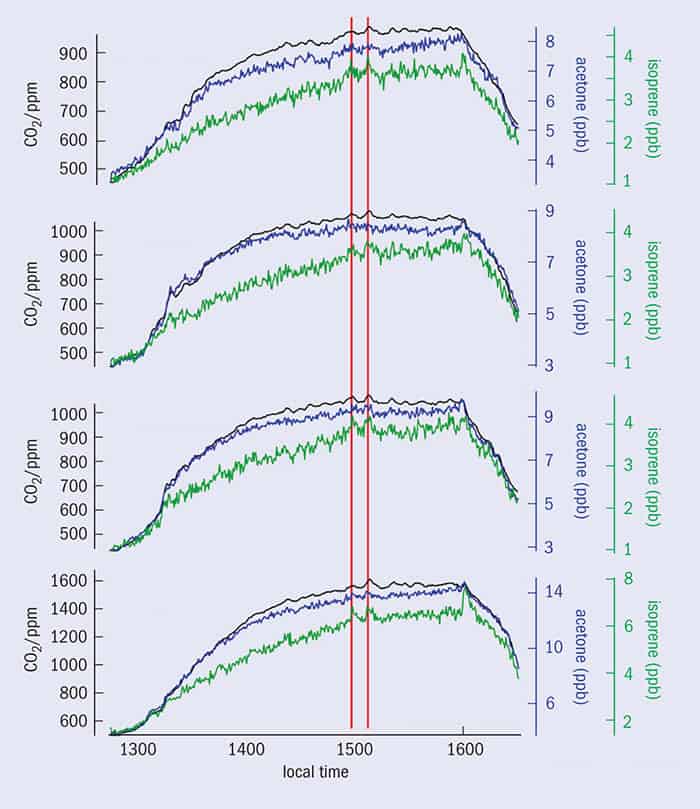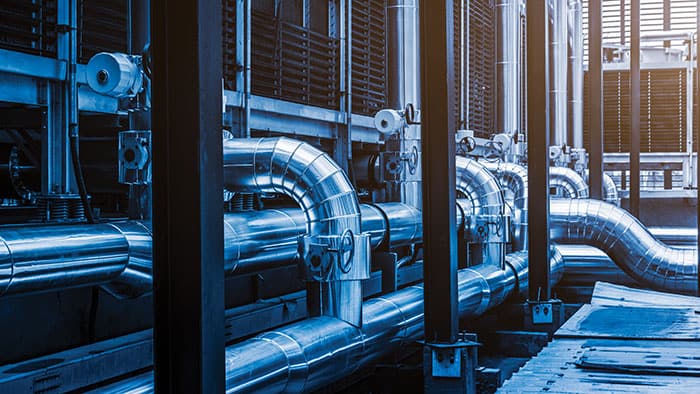Research from a cinema in Germany shows how the breath of a crowd can reflect how they’re feeling, as Stephen Ornes reports

Back in Christmas 2013, the CineStar cinema in Mainz, Germany, became an impromptu, oversized laboratory. Over the course of 108 screenings of 16 films, it hosted an unprecedented experiment on about 9500 moviegoers. Not that most of them noticed, or even knew they were under scrutiny. Science was likely the last thing on their brains as they flocked to the cinema to see the German hit Buddy or blockbusters such as The Hunger Games: Catching Fire and The Hobbit: the Desolation of Smaug.
But Jonathan Williams, an atmospheric chemist at the Max Planck Institute for Chemistry, whose research has taken him around the world, went to his local cinema in search of a story that wasn’t being shown on a screen. He was looking for a story told by the breath of a crowd. He chose the screening room of a cinema because it’s well contained. “It’s really just a box full of people,” he says.
Breath contains valuable information, if one can figure out how to decode it. When excited, we emit more carbon dioxide. After a swig of beer, we exhale ethanol in proportion to the amount in our blood. Our breath reveals if we’ve recently eaten an apple or smoked a cigarette. A human breath contains on average more than 200 easily measured volatile organic compounds (VOCs) – chemicals that exist in a gaseous state at room temperature. Most of those are inhaled initially, but many are generated by living cells and metabolic processes in the body. Not every breath is identical: researchers have identified thousands of individual chemicals that fluctuate depending on where people are, what they’re doing, and how their bodies work. A VOC may be innocuous or harmful; natural or synthesized.
“The breath is basically garbage,” says Joachim Pleil, an analytical chemist with the US Environmental Protection Agency at Research Triangle Park in North Carolina, US, and editor-in-chief of the Journal of Breath Research. “You breathe it out, you ignore it.”
A person’s breath may reveal truths they prefer to keep secret – like how many drinks they’ve consumed. In medicine, researchers are also investigating breath’s chemical signatures as potential biomarkers for diseases or ways to gauge a person’s health. Pleil points out that doctors have been using breath analysis for a long time: about 2400 years ago the Greek physician Hippocrates described foetor hepaticus or “the breath of the dead” – now understood to be a late sign of liver failure.
“Traditionally, breath research has focused on one person, and one breath,” says Pleil. “The hope has been to say something about an individual based on what they’re breathing out.”
Williams’ work is a departure from that model. At the CineStar, Williams wasn’t interested in individual-level data. He sought meaning through the large-scale analyses of the breath of large groups. In a recent Journal of Breath Research editorial he co-authored with Pleil, the scientists call their method “crowd-based breath analysis” (2016 J. Breath. Res. 10 032001). The researchers say the method could be useful in many fields, from helping advertisers gauge an audience’s emotional response to a new product, to differentiating between healthy and unhealthy VOC profiles, to identifying people who may pose a threat of some kind. “There is huge potential for discovery within crowd breath research,” they wrote.
Watching the watchers
Like other theatres, CineStar in Mainz uses a ventilation system that pumps fresh air in through the floor and out through ceiling vents. Williams and his crew installed two devices in the outgoing ceiling ducts: an infrared gas analyser, which measured the airborne concentration of carbon dioxide (figure 1), and a proton transfer reaction time-of-flight mass spectrometer, which measured the traces of more than 100 other gases (see “The science behind crowd-based breath analysis”, below). The scientists collected real-time measurements of VOC levels every 30 seconds of a film as audiences laughed, gasped and were startled. Afterwards, they aligned individual measurements with a description of the film’s plot, broken down into 30 s chunks (2016 Scientific Reports 6 25464 ).

Molecules associated with popcorn and fizzy drinks didn’t change throughout the movie. Predictably, the researchers found that carbon-dioxide levels rose and fell as audiences filled and emptied the screening rooms, respectively. So did levels of acetone and isoprene, two common by-products of metabolism. (Acetone is a by-product of fat catabolism, and isoprene is exhaled as the body makes cholesterol.) The scientists also observed that the VOC levels didn’t follow smooth curves; they were punctuated with small peaks.
Williams suspected those peaks revealed something about how people reacted to the movie. Following that hunch, he and his team identified scenes connected to these VOC peaks – such as when Katniss’ dress ignites or the final battle begins in The Hunger Games: Catching Fire. The same peaks appeared at every screening, every day, as though during those times all the audiences were breathing in synchrony (figure 2). That repetition of the pattern gave Williams confidence that the connection they were seeing was both substantial and reproducible.

Williams and his team then set out to see if the relationship between movie scenes and VOC emissions was causal. They annotated each 30 s interval of the films with descriptive labels that identified the genre or action of the scene. (“Comedy” or “chase”, for example.) Then, using the Mogon supercomputer in Mainz, they created a model based on two-thirds of the data that connected scene descriptions to VOC levels. For the remaining third of the data, they fed the VOC levels into their model to see if they would successfully predict scene descriptions and so prove a causal relationship. They found that VOC levels most successfully predicted scenes described as “suspense” or “comedy”. Scenes labelled “chase” and “romance”, on the other hand, weren’t significantly linked to VOCs.
Norman Ratcliffe, who has spent more than two decades analysing volatiles in gas, urine, faeces and blood at the University of the West of England in Bristol, UK, thinks Williams’ crowd-based methods have the potential to help interpret what breath VOCs can tell us. “It sounds like a very good approach,” he says. And it’s efficient, to boot: “You get the responses of hundreds of people in just one measurement.”
Into the real world
The vast majority of VOCs in the atmosphere are produced by vegetation, so Williams’ research typically takes him to verdant locales such as the Amazon rainforest or boreal forest in Finland. He’s studied pollution in Beijing, China, and later this year he’ll begin studying oil industry pollution and emissions in the Persian Gulf. The cinema project, he says, was borne of a natural question: how does human breathing affect the chemical composition of the atmosphere?
As it turns out, it doesn’t. “The amount [of VOCs] we emit as human beings is actually a very small amount,” he says. However, the question had led him to wonder if he could find some way to gauge human contributions. In April 2012 Williams’ team had used a mass spectrometer to measure VOCs during a football match at the Coface Arena in Mainz. Hoping to see a surge in carbon dioxide after a goal, the scientists had been disappointed when their data didn’t deliver. That project led Williams to think about running a similar experiment in a smaller space – like a cinema.
The new findings, as a proof of concept, suggest VOCs may be used to gauge human emotion, though the field is still in its early days. In addition to marketing, that idea may influence other fields. Pleil, who had been working on a series of papers about cellular respiration when he first met Williams, sees possibilities in health and threat assessment. Crowd breath analysis could help scientists describe a baseline VOC profile, in order to be able to use breath to identify individuals exposed to harmful substances. In health care, a person with a toxic VOC exposure might get treatment before symptoms begin. In security, a person queuing at an airport with jet fuel VOCs on their breath might be detained for questioning. (Do they work at an airport, or have they just built a dirty bomb?)
“This could be a valuable resource for trying to deduce what people think without giving them the opportunity to lie about it,” says Pleil.
Although Williams is soon heading to the Middle East, his work with VOCs and films already has a sequel: he’s currently sitting down with data collected during screenings of Star Wars: the Force Awakens. May the breath be with him.
The science behind crowd-based breath analysis
The wisdom of the crowds may be in our breath: recent research at Jonathan Williams’ lab at the Max Planck Institute for Chemistry in Mainz, Germany, shows a new way to study volatile organic compounds, or VOCs, generated by crowds in a cinema.
Joachim Pleil, at the US Environmental Protection Agency, says researchers can use two kinds of analysis for studying gas composition: offline and real-time. With offline analysis techniques, scientists have to collect a sample and take it to a lab. Real-time analysis happens as the sample is being created. “What Jonathan is doing probably would be difficult, if not impossible to do, with offline analysis,” he says. “The value of crowd breath is only apparent and can only be realized if you have online analysis.”

To measure carbon dioxide, the scientists used infrared spectroscopy, which beams infrared light through a sample. The carbon-dioxide molecules absorb this light at frequencies corresponding to their vibrational modes, so the difference between the initial and final infrared light translates to a measurement of the amount of carbon dioxide.
For the VOCs, Williams and his crew needed something more sophisticated to measure hundreds of VOCs every 30 seconds. That meant collecting high-resolution data in real time. There are many different tools for that purpose, but they selected proton transfer reaction time-of-flight mass spectrometry (PTR-MS), a real-time technology that was first developed in the 1990s by physicists at Innsbruck University in Austria. PTR-MS can measure even minuscule traces of a suite of airborne VOCs.
The tool first creates ions by attaching extra protons to molecules of ordinary water. Then it sends the ionized water vapour through a sample of air. When the ions collide with ordinary atmospheric ingredients such as nitrogen or oxygen, nothing happens. But when they collide with VOC molecules, the proton attaches itself to the VOC. That’s because most VOCs have a higher proton affinity than water, and gases such as nitrogen and oxygen have a lower proton affinity than water. With the protons attached, the tagged VOCs can then be measured in real time by a mass analyser, which identifies the individual varieties of VOC. “We use this method widely, and it measures fast,” says Williams.



